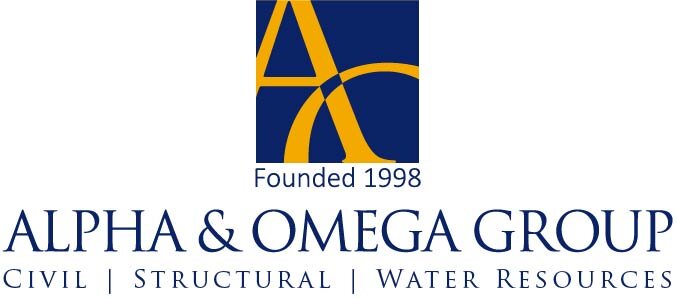The Beginning, the End, and the Dash In-Between: An Employee’s Perspective
/By Ava Barlow
“Begin with the End in mind.” Alpha & Omega Group’s tagline appears on our letterhead, business cards, website – all our branding materials. A&O President Ted Bartelt wrote a blog post on what he had in mind with “Begin with the End in mind.” Our tagline has many different levels of meaning, depending on one’s perspective. Clients see it as a promise that we will fulfill their goals of a given project – a nice greenway bridge for residents to walk or cross on a bicycle; a safe highway bridge to drive across; or efficient stormwater control that will prevent contaminants from getting into our lakes, streams, and drinking water. Ted spoke of how he sees it as having an eternal, spiritual meaning that transcends the here and now. To him the tagline gives him greater responsibility, because in serving clients for the sake of public safety, he is also serving God.
How do A&O employees understand this motto? None of the current employees have been around since the very beginning of A&O, although we have learned the story of how our company began. We certainly want A&O to continue for many years. When considering beginning – end, we are living the dash in-between.
The dash in-between is much more than an insignificant punctuation mark – it is where the rubber meets the road. Sometimes the dash in-between feels like a dash, or a sprint – when we work hard to meet deadlines and to complete a job with excellence. But rather than a competition, we see the dash as a cooperative, team effort. We support and help each other achieve our goals. The dash in-between is where we, as members of this team, live out all six core values of A&O: relationships, teamwork, trust, servant attitudes, stewardship, and excellence.
At the beginning of every week, we have a meeting we call “Monday Momentum,” or “Monday Mo,” for short. At this meeting, we discuss values and character traits that are important in the workplace and consider how to apply them to our current workload. Monday Mo inspires us and sets the tone for the coming week. We strive to fulfill these values, not only because our company leaders expect us to, not just because clients expect us to, but we expect it of ourselves.
This is a small company, and we feel like a family. Ted and Glenn Zeblo, our vice president and co-owner, care about us, and we all care about each other. Whether any of us is facing a health problem, an issue with a family member, or a challenge with our work, they listen and help if they can. They also pray for us. They trust us to do a job well, to use our creative abilities to solve problems. Because of these trusting relationships, we strive to do our best work. While they might not like to be reminded, both Ted and Glenn set an example for the rest of us in their lives and in their work – and we try to live up to the example. In short, Ted and Glenn’s management style makes us better, both as employees and as people.
We are somewhere in the middle of the timeline of A&O – the dash. While we don’t really want to think about the end of A&O, we do want the company to be known for all of those core values mentioned above – they are not just some marketing blather, but have real meaning and importance to us. We want the company to be known as a great place to work, where we all become better at what we do and how we live and interact. We want all those we serve to think of us as a reliable, trustworthy company that can solve a problem with integrity, creativity, efficiency, and excellence.















